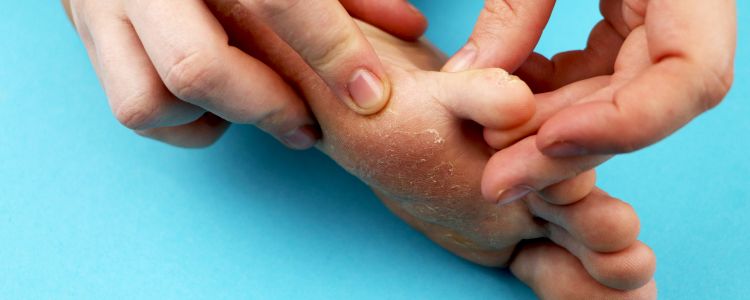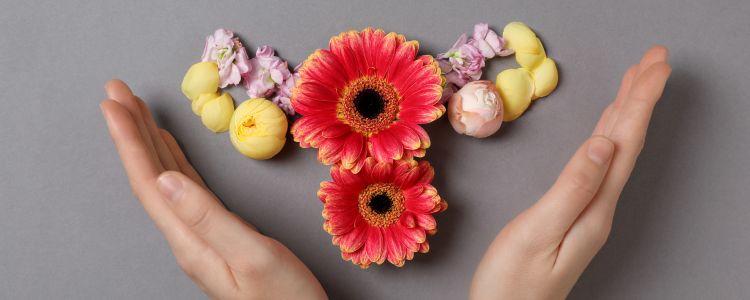
Why Fungal Infections Keep Coming Back – And How To Treat Them Effectively
- Dr Jeetesh Singh
- No Comments

That maddening itch, the stubborn redness- and just when you think it’s gone, your fungal infection on the skin flares back up again. If you’re battling a recurring fungal infection, you’re not alone. Millions across India face this frustration – whether it’s a fungal infection between fingers that makes every movement painful, an infection in private parts causing discomfort and embarrassment, or a persistent patch that resists even the strongest creams. Figuring out why fungal infections happen and why they keep coming back is the first line of treatment.
In this blog, you’ll find out why these persistent fungal infections outsmart treatments. And how can you break this cycle for good? Let’s dive deeper.
Table of Contents
ToggleThe Science Behind the Stubbornness: Why Fungi Thrive
Fungal spores are everywhere – in soil, air, and even on our skin. They love warm, moist environments (hello, Indian monsoons and summers!). But recurrence isn’t just about humidity. Here’s why they cling on:
1. Incomplete Treatment
Many over-the-counter treatments for fungal infections tackle surface symptoms but miss deeper biofilms (fungal “fortresses”). Stopping when the itching fades leaves reservoirs intact.
2. Compromised Immunity
Stress, poor sleep, or underlying health conditions weaken the immune system’s defences. This is especially true for internal issues, such as fungal infections in the lungs or stubborn skin cases.
3. Resistance
Overuse of antifungals can lead to the development of drug-resistant strains, making the treatment of fungal infections increasingly complex.
4. Anatomical Traps
Areas such as skin folds, between toes (fungal infection between fingers), or ears (fungal infection in the ear) trap moisture and spores.
Also Read What Remedy Should I Take For Fungal Infection
The Symptom Spectrum: More Than Just Itching
Recognising fungal infection symptoms early is key. Look out for:
- Skin: Red, circular rashes with raised edges (fungal infection on face or body).
- Scalp: Flaking, hair loss, painful pustules (needs specialised scalp fungal infection treatment).
- Private Areas: Burning, discharge, or redness (fungal infection in private parts).
- Nose/Lungs: Sinus pain or chronic cough (fungal infection in nose or fungal infection in lungs symptoms – always consult a doctor for these).
Why Conventional Methods Fall Short
Typical over-the-counter treatments for fungal infections (creams, powders) often provide symptomatic relief but fail to:
- Address individual susceptibility
- Strengthen long-term immunity
- Correct the internal terrain that attracts fungi
This is why home remedies for fungal infections (like tea tree oil) offer temporary comfort but rarely prevent relapse.
Homoeopathy: A Dual-Path Strategy for Lasting Relief.
Homoeopathy doesn’t just chase symptoms. It works on two fronts:
- Restoring Balance: Corrects underlying vulnerabilities (like excessive sweating or immune patterns).
- Building Resilience: Enhances your body’s self-healing capacity to resist future attacks.
How It Addresses Recurrence
- Individualised Care: A homoeopath considers your unique history, stress triggers, and even dietary habits, not just your rash.
- Holistic Action: Remedies may simultaneously improve gut health, stress response, and skin integrity.
- Zero Suppression: Unlike creams that merely mask redness, homoeopathy seeks true resolution from within.
Tailored Support for Common Hotspots
| Area | Challenge | Homeopathic Focus |
| Skin/Feet | Peeling, itching between toes (foot and finger fungal infection) | Strengthening skin barrier & moisture balance |
| Groin/Genitals | Redness, burning (fungal infection in the private parts) | Soothing sensitivity + systemic immunity |
| Scalp | Flakes, hair loss (needs scalp fungal infection treatment) | Addressing inflammation & microcirculation |
| Ears/Nose | Itching, discharge (fungal infection in the ear/nose) | Supporting mucosal defences |
Your Anti-Fungal Action Plan: Prevention + Care
1. Starve the Fungus
- Dry Thoroughly: Gently pat the skin folds, feet, and groin area dry. Use a separate towel for affected areas.
- Wear Smart: Choose cotton underwear and moisture-wicking socks. Avoid tight synthetics.
- Foot Care: Rotate shoes, use breathable footwear, and go barefoot at home when possible.
2. Boost Your Defences:
- Diet: Cut refined sugars (fungi love glucose!). Add probiotics (yoghurt, fermented foods).
- Stress Management: Practice yoga or pranayama – cortisol spikes weaken immunity.
- Sleep: Prioritise 7-8 hours; tissue repair peaks during rest.
3. When Recurrence Strikes:
- Don’t Self-Diagnose: A fungal infection on the skin can mimic eczema or psoriasis.
- Avoid steroid creams, as they can worsen fungal infections on the face or genitals.
- Consult Early: Delaying care risks a more severe infection (e.g., a fungal infection in the lungs, which can cause symptoms).
Also Read Foot Care 101: Why BT Foot Cream Is The Best Solution For Dry, Cracked Heels
Why Patience Pays Off with Holistic Care
Homoeopathy isn’t a “quick fix.” It may take weeks to months for deep-seated, persistent fungal infections to resolve fully. Why stick with it?
1. Sustainable Results
Homoeopathy focuses on correcting the underlying internal imbalance that makes one prone to fungal overgrowth rather than just suppressing surface symptoms. By enhancing the body’s immune response and reducing individual susceptibility, it aims to break the cycle of recurrence. This foundational approach supports longer-lasting relief compared to treatments that only target the immediate infection, helping prevent future flare-ups.
2. No Harsh Side Effects
Derived from natural sources in highly diluted forms, homoeopathic remedies work gently with the body’s processes. They are non-toxic and non-habit-forming, making them suitable for the long-term management of persistent conditions. This gentleness is particularly beneficial for sensitive areas (like skin folds, face, and genitals) and vulnerable groups, including children, older people, or those with sensitive constitutions.
3. Whole-Health Benefits
As homoeopathy treats the individual holistically, rather than just the localised infection, it often impacts overall well-being. Patients often report improvements in secondary aspects, such as digestion, sleep quality, stress tolerance, and energy levels, during treatment. This occurs because remedies aim to restore total systemic balance, supporting the body’s innate healing capacity beyond the primary fungal symptoms.
The Way Forward: Your Path to Fungal Freedom
Breaking the cycle of recurring fungal infection requires a shift from suppression to root-cause resolution. While natural remedies for fungal infections, such as neem or turmeric, help externally, homoeopathy offers an inside-out solution tailored to your body’s specific needs.
“The greatest medicine is to empower the body to heal itself.” – Paracelsus.
Supporting Your Journey: For topical comfort during treatment, Schwabe India’s specialised creams can complement holistic care. Topi Heal Cream soothes irritated skin, while Topi Sulphur Cream addresses localised imbalances. Always pair these with professional homoeopathic guidance for systemic correction.
Ready to end the itch-reward cycle? Consult a registered homoeopath to explore how this 200-year-old science can restore your skin’s natural resilience. Because lasting relief from fungal infection symptoms isn’t just possible – it’s within reach.





























